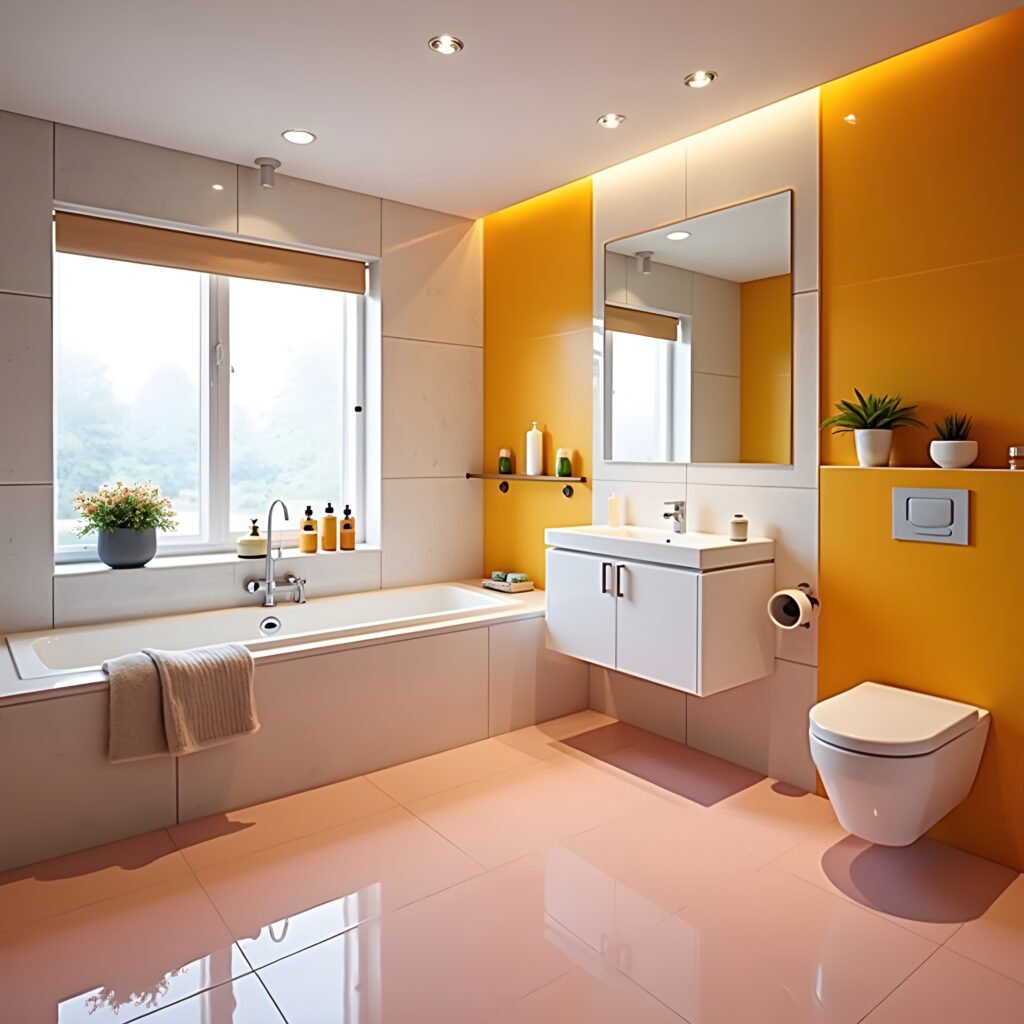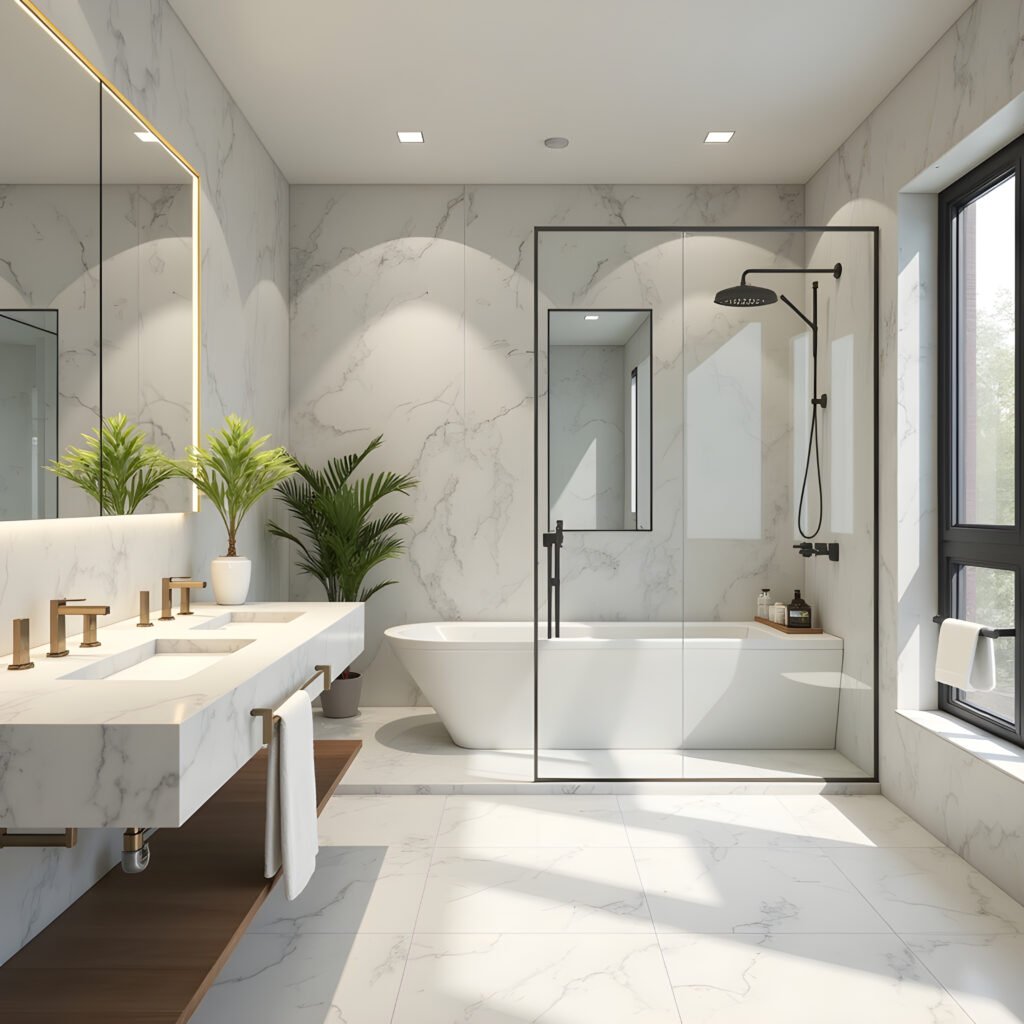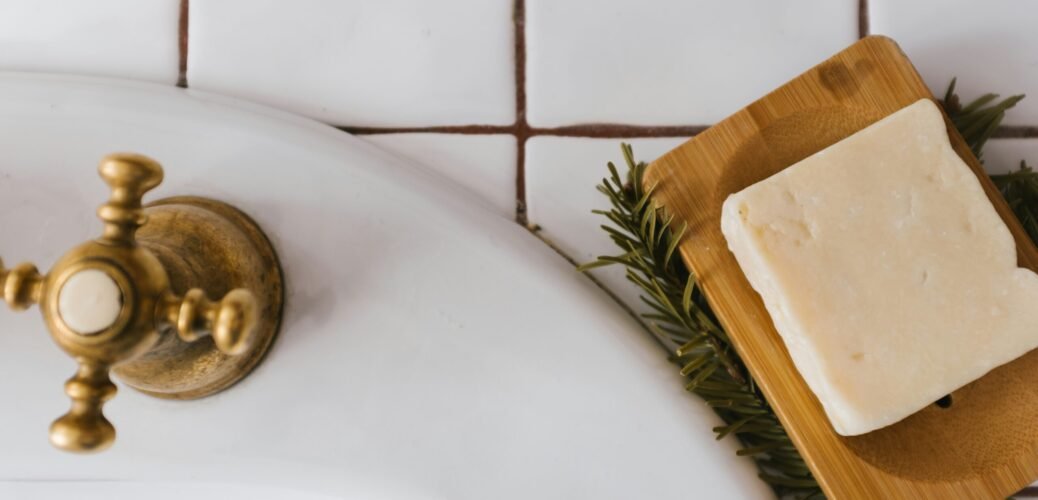How Much Does Bathroom Fitting Cost in London and Surrey?
Introduction to Bathroom Fitting Costs
Bathroom fitting encompasses the complete process involved in renovating an existing bathroom or installing a new bathroom from scratch. This procedure typically involves plumbing, electrical work, tiling, and the installation of various bathroom essentials such as bathtubs, sinks, toilets, and cabinets. Given the complexity and scope of these tasks, the costs associated with bathroom fitting can vary significantly.
Several factors substantially influence the overall expense of a bathroom fitting project. Primarily, labor costs represent a significant portion, with professional tradespeople such as plumbers, electricians, and tilers commanding considerable fees for their expertise and time. In regions like London and Surrey, where the demand for skilled labor is high, labor rates can be particularly steep.
Material costs are another critical determinant, affecting the overall budget. The choice of materials, whether high-end fixtures, designer tiles, or standard fittings, directly impacts the final price. For instance, opting for luxurious materials like marble or high-quality ceramics will naturally escalate costs compared to standard alternatives.
The complexity of the project plays a crucial role as well. Simple refurbishments where only superficial changes are made will incur lower costs compared to comprehensive renovations that involve substantial structural modifications, such as altering plumbing layouts or electrical wiring. Addressing these complexities often demands specialized skills and additional time, thus raising the final expenditure.
Additionally, geographic location significantly influences bathroom fitting costs. In metropolitan areas such as London, prices are noticeably higher due to the elevated cost of living and operational expenses for contractors. Conversely, costs might be slightly more manageable in surrounding regions like Surrey, although proximity to London still keeps them relatively high compared to other parts of the UK.
Understanding these fundamental factors is crucial for homeowners planning a bathroom fitting project. It provides a realistic perspective on potential expenses and aids in making informed decisions tailored to individual budgets and preferences. The subsequent sections will delve deeper into the specific costs associated with bathroom fitting in London and Surrey, offering a detailed breakdown to guide prospective renovators.

Factors Affecting Bathroom Fitting Costs
When it comes to determining the cost of bathroom fitting in London and Surrey, several critical factors come into play. Understanding these elements can aid homeowners in making informed decisions and budgeting effectively for their bathroom renovations.
First and foremost, the size of the bathroom significantly influences the overall cost. Larger bathrooms typically require more materials, fixtures, and labor, driving up the expense. Additionally, the current condition of the bathroom is a crucial consideration. Older bathrooms or those in poor structural condition might necessitate extensive preparatory work, such as plumbing repairs, asbestos removal, or structural reinforcements, further adding to costs.
The selection of materials and fixtures is another pivotal factor. High-quality materials and designer fixtures undoubtedly enhance the bathroom’s aesthetic appeal and longevity but come at a higher price. Conversely, more budget-friendly options can help reduce costs, though they might sacrifice some durability and style. Homeowners must strike a balance between quality and cost depending on their preferences and financial constraints.
Labor costs also play a vital role in the overall expense of bathroom fitting. Skilled labor often commands a premium price, reflecting the expertise and precision required for high-standard results. In London and Surrey, labor costs can vary widely based on the complexity of the project, the reputation of the contractor, and the time required to complete the work. It is advisable to obtain multiple quotes to understand the prevailing rates and ensure competitive pricing.
Finally, additional features or customizations add to the total cost. Custom-built cabinets, intricate tile designs, advanced water-saving fixtures, and premium lighting solutions are examples of enhancements that could elevate bathroom functionality and aesthetics but at an increased expense. Homeowners should carefully consider which features are worth the investment and which can be scaled back without compromising the overall vision.
By thoroughly evaluating these factors, individuals can have a clearer picture of what to expect in terms of costs and make well-informed decisions suited to their budget and needs.
Cost Breakdown: Budget, Mid-range, and Luxury Bathrooms
When considering a bathroom fitting in London and Surrey, costs can vary significantly based on the quality of materials, fixtures, and labor involved. Breaking these down into budget, mid-range, and luxury categories can offer a clearer picture of what to expect in terms of expenses.
Budget Bathrooms
Budget bathrooms are often the most economical choice, suitable for those looking to upgrade without a significant financial outlay. Typically, this level includes basic functional fixtures such as standard toilets, sinks, and bathtubs. The cost for a budget bathroom fitting generally ranges from £2,500 to £5,000. Materials at this level often involve ceramic or laminate finishes, and standard off-the-shelf products from high street retailers are usually utilized. Labor costs are modest, reflecting relatively straightforward installations and minimal customization.
Mid-range Bathrooms
Mid-range bathrooms provide a balance between cost and quality, offering enhanced functionality and aesthetics without reaching luxury levels. This category generally includes better finishes, such as porcelain tiles and upgraded fixtures like rain showers and underfloor heating. The typical expenditure for mid-range bathroom fitting ranges from £5,000 to £10,000. This price bracket often includes branded fixtures like Grohe or Villeroy & Boch, and semi-customized solutions that necessitate skilled labor, contributing to higher installation costs. Enhanced lighting and perhaps some integrated storage solutions may also be part of a mid-range bathroom remodel.
Luxury Bathrooms
Luxury bathrooms represent the high end of the spectrum, featuring premium materials and bespoke designs. Costs for luxury bathroom fittings start around £10,000 and can exceed £25,000, depending on the extent of the customization. This tier includes high-end materials like natural stone or marble, custom cabinetry, and advanced technology such as smart showers and integrated sound systems. Labor costs are substantial, reflecting the expertise required for bespoke installations. Luxury bathrooms often feature design elements tailored specifically to the homeowner’s tastes, and the level of craftsmanship is significantly higher, resulting in a truly unique space.
Understanding these cost breakdowns can help homeowners make informed decisions about their bathroom fitting projects, ensuring they choose the right balance of quality and expense to meet their needs and preferences.
Labor Costs and Hiring Professionals
When considering bathroom fitting in London and Surrey, labor costs constitute a significant portion of the overall expense. These costs are usually determined by the specific requirements and complexity of each project, and the expertise of the tradespeople involved. On average, you can expect to pay various rates for different professionals. Plumbers, for instance, typically charge between £40 to £80 per hour, while electricians might have a similar rate. Tilers usually command around £20 to £40 per hour, although project-based fees are also quite common across all these trades.
Choosing the right professionals is crucial for ensuring high-quality work and avoiding future issues. When hiring, it is essential to look for accredited qualifications, such as membership in professional organizations like the Chartered Institute of Plumbing and Heating Engineering (CIPHE) or the National Inspection Council for Electrical Installation Contracting (NICEIC). Experience also plays a pivotal role; seasoned tradespeople are often more adept at handling complex bathroom fittings, providing both efficiency and quality. Don’t hesitate to request references or check reviews and ratings from previous clients, as this information can offer valuable insights into their reliability and craftsmanship.
Getting accurate quotes is vital for budgeting purposes. To achieve this, always provide detailed specifications of your bathroom fitting needs when consulting with professionals. Request itemized quotes that break down labor costs and any additional expenses, such as materials or disposal fees. This approach not only helps in comparing different quotes but also minimizes the risk of hidden costs cropping up later. Additionally, make sure that all quotes are provided in writing and cover all anticipated aspects of the job to avoid misunderstandings down the line.
In summary, labor costs and the selection of professionals are crucial elements in determining the overall cost of bathroom fittings in London and Surrey. By paying attention to qualifications, experience, and obtaining detailed quotes, you can ensure a smoother, more predictable, and cost-effective bathroom renovation.

Material Costs: From Tiles to Taps
Understanding the cost of materials is crucial when planning a bathroom fitting in London and Surrey. The choice of materials can significantly impact the overall expenditure. Let’s examine the costs associated with essential materials, starting with tiles. Tiles, a staple of any bathroom, come in a variety of materials, including ceramic, porcelain, and natural stone. Ceramic tiles are typically the most cost-effective, ranging from £15 to £40 per square meter, whereas porcelain tiles present a slightly higher range, from £30 to £50 per square meter. Natural stone tiles, such as marble or granite, can vary widely in price, with premium selections costing upwards of £100 per square meter.
Flooring often goes hand in hand with tiling, and choices here range from vinyl to high-end wood and stone options. Vinyl flooring is an economical choice, starting at roughly £20 per square meter, while laminate wood flooring ranges from £25 to £50 per square meter. For those seeking a luxurious touch, natural stone flooring can cost between £70 and £200 per square meter, depending on the type and quality.
The costs of key fixtures such as sinks, toilets, showers, and baths also vary significantly. Standard sinks can be purchased for as low as £50, but designer options can exceed £500. Toilets range from £100 for a basic model to over £500 for high-end designs. Showers vary widely based on whether they are electric, mixer, or power showers, generally ranging between £150 to £600. Baths, particularly freestanding or whirlpool models, can range from £200 to beyond £3,000.
Cabinetry and countertops are other critical components. Basic cabinetry units might start at £100 per unit, while bespoke or designer options could easily surpass £1,000. Countertop materials also differ greatly, with laminate surfaces costing around £20 to £40 per square meter, while premium options like marble or granite range from £150 to £400 per square meter.
When comparing brands, it’s clear that high-end brands command higher prices across all material types. For instance, tiles from renowned brands could cost 20-30% more than lesser-known counterparts. Choosing between varying levels of quality and brand prestige provides a wide spectrum of costs, allowing for flexibility in budgeting and achieving the desired look and feel for your bathroom. *Understanding these costs enables homeowners to make informed decisions* that balance aesthetics and budget, ensuring a satisfactory bathroom fitting experience.
Additional Costs and Considerations
When embarking on a bathroom fitting project in London and Surrey, it’s imperative to account for potential additional costs that may arise, beyond the primary expenses of fixtures and labor. One of the significant areas of concern is plumbing upgrades. The existing plumbing system might require enhancements to accommodate new fixtures or to replace outdated pipes. Such upgrades ensure optimal functionality and compliance with contemporary standards but can add to the overall budget.
Another crucial element is electrical work. Introducing modern lighting, underfloor heating, or advanced bathroom technology often necessitates rewiring or installation of new circuits, which necessitate hiring qualified electricians. Furthermore, proper waterproofing is vital to prevent water ingress, which can lead to further structural damage if not adequately addressed. Utilizing high-quality waterproof membranes and materials is essential and can significantly impact the cost.
Moreover, an efficient ventilation system is critical to maintaining air quality and preventing mold growth in the bathroom. Installing or upgrading ventilation systems, such as extracting fans, ensures moisture is adequately managed, safeguarding the longevity of the bathroom fittings and the structural integrity of the space.
Unforeseen expenses can also emerge during the bathroom fitting project. Structural repairs may be necessary if underlying issues are discovered once the old fittings are removed. For instance, hidden water damage or termite infestation requiring prompt attention can increase costs. Mold removal is another potential unforeseen expense. Mold is not always visible on the surface and can be discovered during renovations, requiring professional remediation to ensure a safe and healthy environment.
Being aware of these additional costs and considerations is essential for a comprehensive budgeting plan. Consulting with professionals in plumbing, electrical work, and bathroom fitting at the preliminary stages can give a clearer cost projection, helping avoid budget overruns and ensuring the project’s smooth completion.

How to Plan and Budget for Your Bathroom Fitting
Embarking on a bathroom fitting project in London or Surrey necessitates meticulous planning and a well-structured budget. Setting a realistic budget is paramount to navigating the multitude of costs and preventing unforeseen financial strains. Begin by assessing your financial boundaries and identifying a maximum expenditure limit. This preliminary step ensures you have a clear monetary framework to guide your decisions.
Next, prioritize spending based on the key components of your bathroom fitting. Essential elements such as plumbing, fixtures, and tiling should take precedence in your budget. Allocating sufficient funds to these critical areas will help avoid compromising on quality. To make cost-effective choices, consider a balance between aesthetics and functionality. Opt for mid-range fixtures that offer durability and a pleasing design, rather than premium options that might surpass your budget.
Research is a crucial step in planning your budget. Collect multiple quotes from contractors to get a comprehensive overview of potential costs. This will ensure you recognize any outliers and avoid overpaying. Tools such as online calculators can provide estimates based on the scope of your project, offering a starting point for budget allocation. For London and Surrey specifically, consider location-based cost variations that might affect labor and material prices.
Keep an adaptable mindset to mitigate unexpected expenses. Contingency funds, typically 10-15% of your total budget, should be set aside to address unforeseen issues such as plumbing complications or material shortages. This financial cushion prevents budget overruns and keeps your project on track.
Additionally, leverage local resources for budget management and planning. Local contractors and suppliers often provide valuable insights into cost-saving measures without compromising on quality. Professional advice can help refine your budget, ensuring every pound is effectively utilized.
In conclusion, careful planning and prudent budgeting are the cornerstones of a successful bathroom fitting project in London and Surrey. By setting a realistic budget, prioritizing essential expenditures, and utilizing available resources, you can achieve a cost-effective renovation that meets your expectations.
Conclusion and Final Tips
In examining the costs associated with bathroom fitting in London and Surrey, several key points have emerged. The expenses can vary widely based on factors such as bathroom size, materials chosen, and the complexity of the installation. When starting a bathroom fitting project, thorough planning is vital to ensure a smooth execution. With adequate planning, you can anticipate potential obstacles, minimizing unexpected delays and additional costs.
Selecting the right professionals is another crucial aspect. By choosing experienced and reliable contractors, you can avoid substandard work, which often leads to higher expenses over time due to necessary repairs or revisions. Do not underestimate the value of vetting your professionals, checking credentials, reviewing past projects, and obtaining multiple quotes. This step not only ensures quality but also offers insight into fair pricing for your specific project.
Adjusting your budget to account for unforeseen expenses is also critical. Additional costs might arise from structural issues discovered during the fitting process, design changes, or the need for specialized fixtures. Having a contingency fund of around 10-15% of your total budget can provide the financial buffer needed to handle these unexpected expenses without compromising on quality or design aspirations.
Finally, use the insights and information shared in this blog to make informed decisions. By understanding the various cost variables and the steps involved, you can set realistic expectations and align your project goals accordingly. Whether you seek to enhance your bathroom’s functionality, aesthetics, or both, an informed approach will pave the way for a successful bathroom fitting project in London and Surrey.

